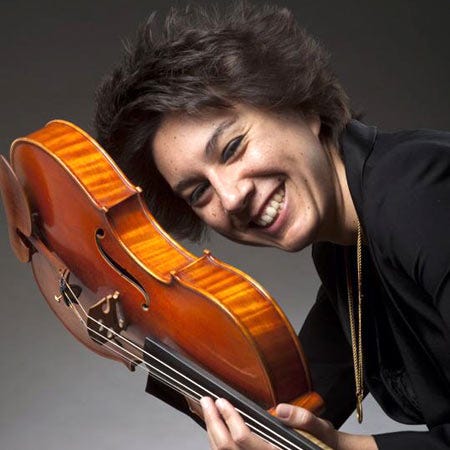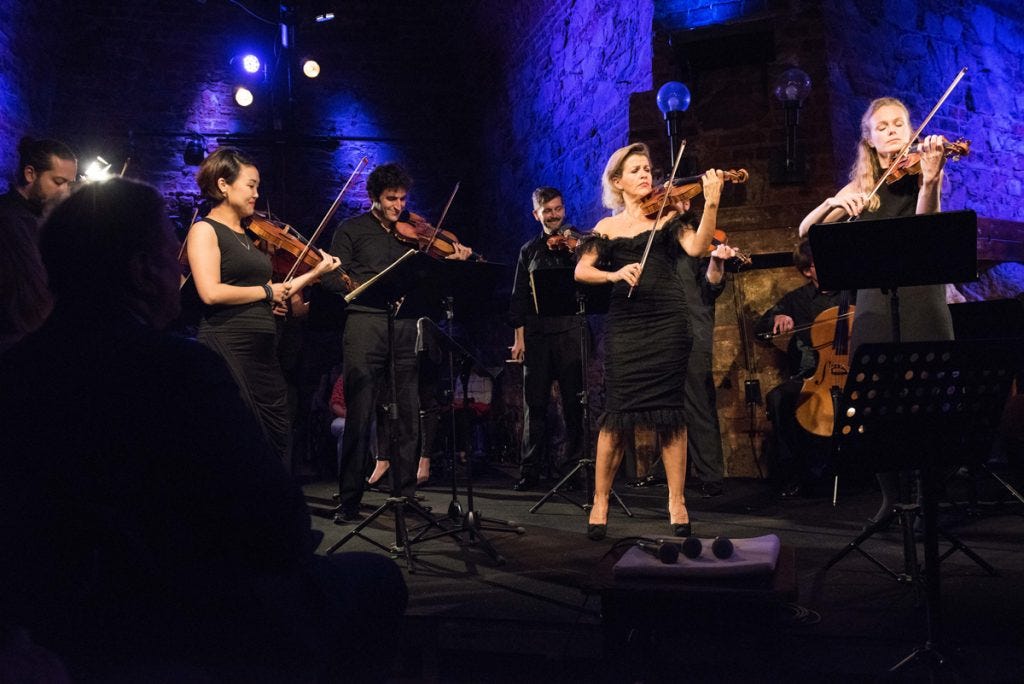Classical Music, VR Technology and a Subterranean Club in Leipzig
Last summer I had a surprise visitor in the Karajan Institute in Salzburg. A young musician from the Gewandhaus Orchester Leipzig stood at the door and wanted to speak with me. Her name was Tahlia Petrosian and as it turned out, she organizes one of the most exciting concert series in Leipzig: Klassik Underground.

Her idea is to bring the wonderful guest musicians that perform with the Gewandhaus Orchestra in touch with the vivid nightlife scene of Leipzig: intimate club concerts with classical music stars.
“Sounds interesting,” I thought, and the list of musicians that performed for her was quite impressive: Leif Ove Andsnes, Kirill Gerstein, Anne-Sophie Mutter and Joshua Bell this Friday.
But what really caught my attention, was the fact, that the concerts were being recorded with 360-degree video, bringing the classical music not only to new audiences in the club but also into virtual reality.
Tahlia wants to win a specific group of listeners for classical music: young, tech-savy and open-minded. And that is the exact same crowd we care about a lot at the Eliette and Herbert von Karajan Institute, so we immediately clicked. (Check out our Classical Music Hackathons where we bring together classical musicians, software developers and designers & read my blog post on music hackathons here).

Matthias Röder (MR): Tahlia, what I find very impressive is your entrepreneurial spirit and organizational acumen with which you set-up this amazing concert series. How did you come up with this idea?
Tahlia Petrosian (TP): Well, what really inspired me was the location. Right next to the Gewandhaus is the Moritzbastei, which is an ancient fortress that sits mostly underground and is today used as a club. So, not only did I have a cool location right on the doorstep of the Gewandhaus but also an incredibly interesting architectural structure with high stone ceilings underground that create an amazing acoustic for classical music. I think when you bring classical music out of the concert hall the location is really key, and it couldn’t get any better than this! I just had to start Klassik Underground. As an ‘aftershow’ venue — featuring solo artists who just performed with the Gewandhaus Orchestra in the Gewandhaus 20 meters away — it works perfectly.
MR: Let’s talk about the technology. Couldn’t one simply host nice concerts and not worry about this additional organizational burden? After all it’s not trivial to set something like this up.
TP: Yes, it would have definitely been much simpler to host nice concerts and don’t worry about technology! But then we would be missing the zeitgeist of the 21st century. I think classical music generally is not adapting or even recognizing the possibilities presented by technology and the internet. Sure, there are live-streamed concerts but the idea of live streaming a 2-hour program has been around for 10 years with little or no change. In particular, I hadn’t seen any concept that really combined classical music and social media in a successful way. Klassik Underground offers ‘Klassik in kleinen Portionen’ (classical music in small portions) — programs are not longer than an hour — and we optimize the shows for social media platforms. We are bringing the traditional German ‘Hauskonzert’ into the 21st century.
360-degree video technology is currently one of the best ways to replicate the live experience. Although its use in the traditional concert hall is somewhat limited due to the inflexible set-up of the orchestra, in the relaxed and intimate club atmosphere at Klassik Underground we are in an ideal position to combine this video technology with classical music, so it was very important that we started to do this.
MR: This format works very well for young classical music fans. How do you appeal to the artists?
TP: Part of the appeal to our guest solo artists is that they get to interact with a new kind of audience and grow their fan basis. Also, they get the material to post on their social media and marketing networks and these days it is critical for solo artists to show that they do more than just play for 2000 elderly people in a large concert hall!
MR: What is your vision for the series? What are your next steps?
TP: After the success of the first shows, the Gewandhaus Orchestra entered into a cooperation with Klassik Underground. That means that I will organize and present four to six Klassik Underground shows each season. There are two aspects to each Klassik Underground show: the first aspect is considering it as a live event with a normally sold-out audience (tickets are only 10 EUR!) and working together with the guest artist to plan the best format for that particular show. The second aspect is figuring out the best way to incorporate technology and post-production so that the show can be posted online. Every show is different and each presents its own challenges!
Naturally, we also have to keep our eye on the latest technological developments. I have a feeling our next step might be trying to combine Klassik Underground with virtual reality headsets…
MR: Thanks a lot for your initiative, Tahlia! Good luck with everything and see you on Friday at the concert. I am looking forward to it!
The next concert in the Klassik Underground series will take place on Friday, December 16. Joshua Bell will perform Mendelssohn’s Oktett with musicians of the Gewandhaus Orchestra. Tickets are available here.
— Matthias Röder is the CEO of the Eliette and Herbert von Karajan Institute in Salzburg. He has studied music performance at the University Mozarteum and received a PhD in music from Harvard University.
— Tahlia Petrosian is a member of the Viola Section of the Gewandhaus Orchestra and the director of Klassik Underground. She studied Viola in Berlin at the Hanns Eisler Hochschule für Musik and the Universität der Künste and Law at the University of New South Wales Australia and Humboldt University Berlin.

